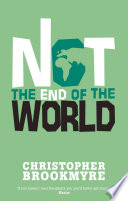

Disruption is often seen as a negative force, but the book presents it as a catalyst for innovation. The author explores how disruptions in various industries have led to groundbreaking advancements and new business models. By viewing disruption as an opportunity rather than a threat, individuals and organizations can harness its potential to drive change. The idea encourages a proactive approach to disruption, where stakeholders anticipate changes and innovate accordingly. The author shares case studies of companies that thrived amidst disruption, illustrating that embracing change can lead to competitive advantages and new market opportunities.
Continue readingIn today's rapidly changing world, uncertainty is a constant. This idea emphasizes the importance of embracing uncertainty rather than fearing it. The author argues that uncertainty can lead to innovation and new opportunities. By adopting a mindset that welcomes the unknown, individuals and organizations can pivot and adapt more effectively. This approach encourages experimentation and fosters resilience, allowing people to navigate challenges and seize new possibilities. Embracing uncertainty also involves recognizing that not everything can be controlled, and learning to thrive in ambiguity can lead to greater creativity and problem-solving capabilities.
Continue readingThe book highlights the significance of community in overcoming challenges and achieving success. The author illustrates how collaboration and support from others can amplify individual efforts. By building strong networks and fostering connections, people can share resources, knowledge, and encouragement. This idea underscores the importance of community in various contexts, from personal relationships to professional environments. The author provides examples of how communities have come together to tackle issues, innovate, and create lasting change, demonstrating that collective action can lead to extraordinary outcomes.
Continue readingFailure is often viewed negatively, but the book challenges this perception by redefining what failure means. The author argues that failure is not the end but rather a stepping stone to success. By reframing failure as a learning opportunity, individuals can extract valuable lessons from their experiences. This idea encourages a growth mindset, where challenges and setbacks are seen as integral parts of the journey. The author shares stories of successful individuals who faced failures and used them as catalysts for growth, illustrating that resilience and perseverance are key to long-term success.
Continue readingAdaptability is crucial in a world characterized by rapid change. The book emphasizes the need for individuals and organizations to be flexible and open to change. The author discusses various strategies for cultivating adaptability, such as continuous learning, being open to feedback, and embracing new technologies. By fostering a culture of adaptability, organizations can respond effectively to market shifts and evolving consumer needs. The idea also extends to personal growth, where individuals are encouraged to step out of their comfort zones and embrace new experiences, ultimately leading to greater resilience and success.
Continue readingHaving a clear vision and sense of purpose is essential for navigating challenges and achieving goals. The author discusses the importance of defining one's vision and aligning actions with core values. This idea emphasizes that a strong sense of purpose can motivate individuals and teams to persevere through difficulties. The book provides frameworks for identifying personal and organizational values, helping readers articulate their vision. By grounding their actions in a clear purpose, individuals can maintain focus and direction, even in the face of uncertainty and adversity.
Continue readingThe book concludes with a call for sustainable practices that consider the long-term impact on society and the environment. The author argues that businesses and individuals have a responsibility to adopt sustainable approaches that benefit future generations. This idea emphasizes the importance of ethical decision-making, social responsibility, and environmental stewardship. The author provides examples of organizations that have successfully integrated sustainability into their operations, showcasing the positive effects on brand reputation and customer loyalty. By prioritizing sustainability, individuals and organizations can contribute to a better future while also achieving their goals.
Continue reading